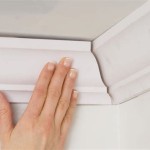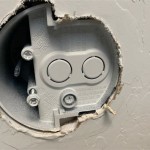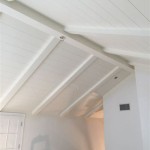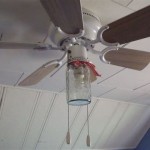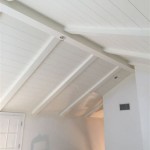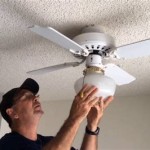Gypsum Board Ceiling Design For Bedroom With Fan
Gypsum board ceilings, also known as drywall ceilings, have become a popular choice in modern bedroom design. Their versatility, affordability, and ease of installation allow for a wide range of aesthetic possibilities. A crucial consideration when incorporating gypsum board ceilings into a bedroom is integrating a ceiling fan. This article explores the design aspects, installation considerations, and benefits of combining gypsum board ceilings with ceiling fans in a bedroom environment.
The selection of gypsum board for bedroom ceilings is typically based on thickness and fire-resistance properties. Standard gypsum boards are sufficient for most residential applications. However, for bedrooms located above garages or in areas requiring enhanced fire protection, fire-resistant gypsum boards are recommended. The type of edge detail – tapered or square – also influences the finishing proccess. Tapered edges enable seamless joints when properly finished with joint compound.
Ceiling fans provide essential air circulation, improving comfort and energy efficiency. Integrating a ceiling fan into a gypsum board ceiling requires careful planning to ensure structural integrity and aesthetic harmony. The ceiling fan's weight and operational vibration necessitate a reinforced mounting structure within the gypsum board system.
Planning and Design Considerations
The initial phase of incorporating a ceiling fan into a gypsum board ceiling design involves meticulous planning. This includes determining the optimal fan size and placement, accounting for room dimensions and existing architectural features. Accurate measurements and detailed blueprints are essential for a successful installation. The selection of the ceiling fan should complement the overall bedroom aesthetic and provide adequate airflow for the room's size. Considerations should also include the fan's noise level, energy efficiency, and control options.
The design phase also involves planning for lighting fixtures. Recessed lighting, typically used in conjunction with gypsum board ceilings, should be strategically placed to provide adequate illumination without interfering with the ceiling fan's operation. The electrical wiring for both the fan and the lights must be carefully planned and executed, adhering to all relevant building codes and safety standards.
A critical aspect of the design is the structural support required for the ceiling fan. Standard gypsum board ceiling framing is often inadequate to support the weight and dynamic forces exerted by a rotating fan. Therefore, a reinforced mounting system is essential. This typically involves installing a fan-rated electrical box securely fastened to a structural member of the building, such as a ceiling joist or a specifically engineered support brace. The electrical box must be certified to support the weight of the fan and be installed by a qualified electrician.
Furthermore, the overall design of the gypsum board ceiling can be customized to enhance the bedroom's aesthetic appeal. Options include creating a suspended ceiling with varying levels, incorporating decorative moldings, or adding texture to the gypsum board surface. The design should be cohesive, seamlessly integrating the ceiling fan into the overall aesthetic.
Installation Process
The installation of a gypsum board ceiling with a ceiling fan requires a systematic approach, starting with the framing and followed by the gypsum board installation, electrical wiring, and finishing. It is crucial to hire qualified professionals for each stage to ensure safety and compliance with building codes. The installation process begins with the construction of the ceiling frame, which typically consists of wooden or metal studs. The spacing of the studs should be determined based on the thickness of the gypsum board being used and the structural requirements of the ceiling.
Prior to installing the gypsum board, the electrical wiring for the ceiling fan and any lighting fixtures must be run. This should be done by a licensed electrician who can ensure that all wiring is properly grounded and protected. The electrician will also install the fan-rated electrical box, securely fastening it to the structural support. The placement of the electrical box should be carefully planned to ensure that the ceiling fan is centered in the room and properly aligned with any architectural features.
Once the electrical wiring is complete, the gypsum board can be installed. The boards should be carefully cut to size and fastened to the ceiling frame using screws or nails. The joints between the boards should be taped and finished with joint compound to create a smooth, seamless surface. Multiple coats of joint compound may be required to achieve a level finish. After the joint compound has dried, the entire ceiling should be sanded smooth and primed before painting.
The final step is to install the ceiling fan. This should be done according to the manufacturer's instructions. The fan should be securely attached to the fan-rated electrical box and all wiring connections should be properly tightened. The fan blades should be balanced to prevent wobbling and noise. The ceiling fan installation should be tested to ensure proper operation and safety.
Benefits and Considerations
Integrating a ceiling fan into a gypsum board ceiling offers several advantages. Ceiling fans improve air circulation, which can enhance comfort, especially in warmer climates. They also help to reduce energy consumption by distributing warm air in the winter and cool air in the summer, allowing for lower thermostat settings. Additionally, ceiling fans can add a decorative element to the bedroom, complementing the overall aesthetic.
However, there are also some considerations to keep in mind. Proper installation is crucial to ensure the safety and longevity of the ceiling fan and the gypsum board ceiling. Inadequate support or improper wiring can lead to structural damage or electrical hazards. Regular maintenance is also necessary to keep the ceiling fan operating efficiently. This includes cleaning the fan blades to prevent dust buildup and checking the wiring connections to ensure they are secure.
The selection of the ceiling fan should be based on the size of the room and the desired airflow. A fan that is too small will not provide adequate circulation, while a fan that is too large may create excessive noise and discomfort. The design of the ceiling fan should also complement the overall aesthetic of the bedroom. There are many different styles of ceiling fans available, ranging from traditional to modern, so it is important to choose one that fits the room's decor.
The cost of installing a gypsum board ceiling with a ceiling fan can vary depending on several factors, including the size of the room, the type of gypsum board used, the complexity of the design, and the cost of labor. It is important to obtain multiple quotes from qualified contractors to ensure that the project is completed within budget. While the initial cost may be higher than other ceiling options, the long-term benefits of improved comfort and energy efficiency can outweigh the initial investment.
Furthermore, consider the impact of the ceiling fan on the room's lighting. Some ceiling fans come with integrated light fixtures, which can provide additional illumination. However, the placement of the ceiling fan may affect the distribution of light in the room. It is important to carefully plan the lighting design to ensure that the room is adequately illuminated without creating glare or shadows.
Finally, it is essential to comply with all relevant building codes and safety standards when installing a gypsum board ceiling with a ceiling fan. This includes obtaining the necessary permits and inspections to ensure that the project is completed safely and legally. Failure to comply with building codes can result in fines or other penalties.

15 Impressive False Ceiling Designs With Fan For Modern Bedrooms

Unique And Inspiring Bedroom Ceiling Design Ideas Lighting Modern

60 False Ceiling Design For Bedroom With Fan In 2025

60 False Ceiling Design For Bedroom With Fan In 2025

Gypsum Ceiling Designs Modern And Versatile Options For Your Home Sanideas Com

Top 5 Bedroom False Ceiling Designs You Will Love Saint Gobain Gyproc

Master Bedroom False Ceiling Design For Ideas With Images Art

60 False Ceiling Design For Bedroom With Fan In 2025

Top 5 Bedroom False Ceiling Designs You Will Love Saint Gobain Gyproc

False Ceiling Design 2024 Bedroom Gypsum
Related Posts

